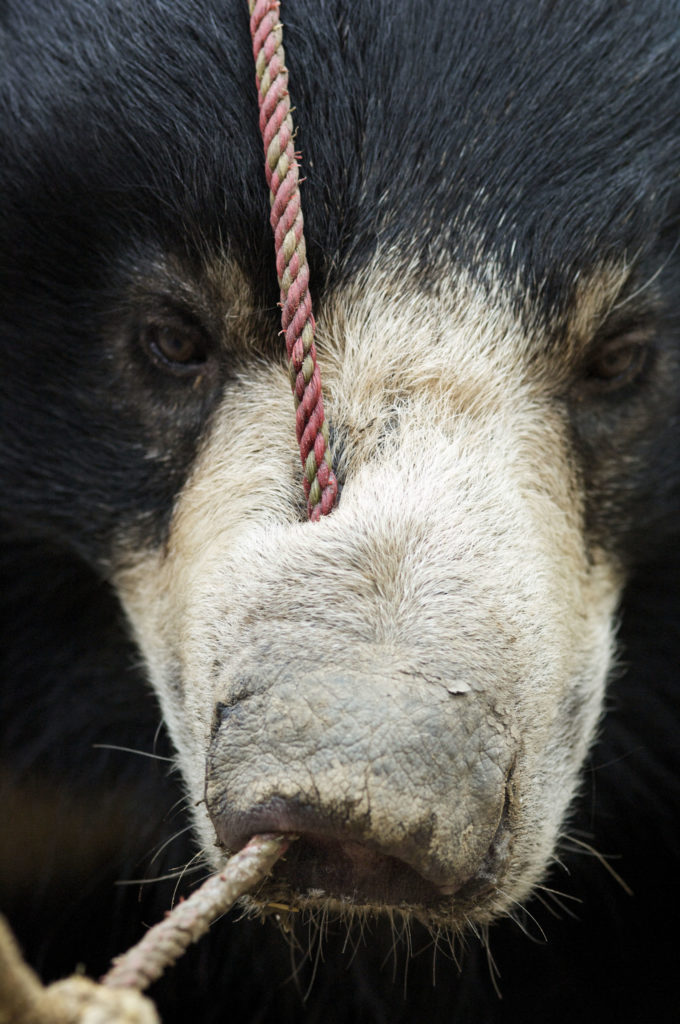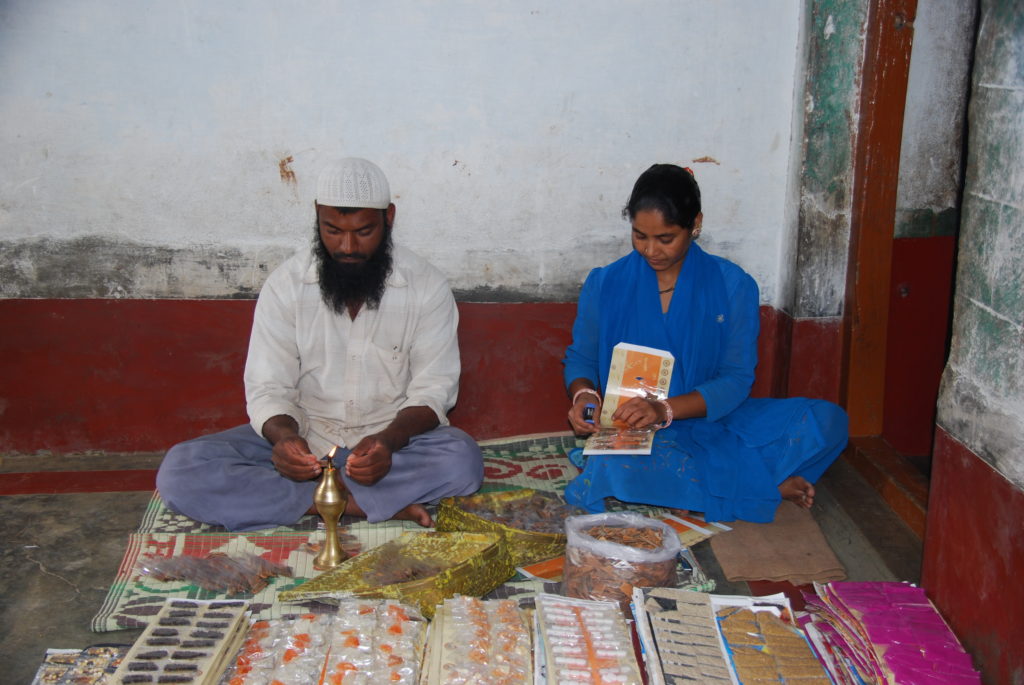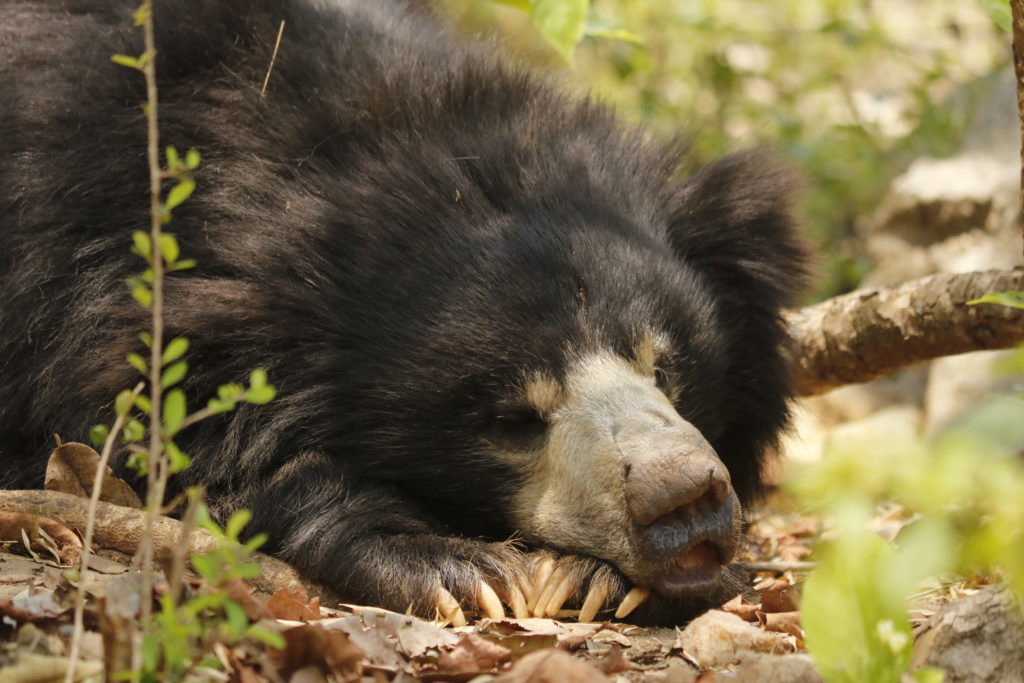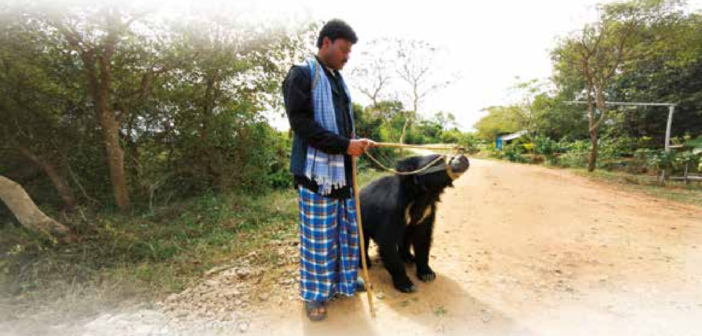It’s not too often that we have the opportunity to look back on a practice that harmed animals and reflect on how it was successfully brought to an end. The organization International Animal Rescue (IAR) has done just that in its new book The Last Dance, which focuses on the use of performing “dancing bears” among the Kalandar people of India. For hundreds of years, Kalandar handlers traveled with captive sloth bears who “danced” for money. A hugely successful project carried out by IAR in collaboration with other organizations ended the dancing bear trade in 2009.
I had a conversation with Alan Knight, CEO of IAR, to discuss why and how this cruel trade was ended, and how this project convinced him that animal welfare and human welfare go together.
Dylan Forest: The use of “dancing bears” was nowhere near as harmless as it might sound to some. Can you explain what the lives of these bears were like before they were rescued and why it was so important to end this practice?

Alan Knight: We have to remember that the bears didn’t volunteer to dance! The poachers tracked down the bear den and entered it to steal the cubs from their mother. The mother was normally maimed or killed in the process. The cubs had a hot poker forced through the upper part of their snout and a rough rope was passed through this raw hole and tied around their neck. This was the main instrument used to make them dance. As the bear cubs grew, they had their canine teeth broken off at gum level to stop them from biting their handlers and the public. The roots festered and caused tremendous pain for the bear.
The bears were dragged around the states of India by their handlers, being fed on scraps and given cheap alcohol to subdue them when dancing. All in all it was a hard and sad life for a dancing bear!
The use of dancing bears in India was ended in 2009. It seems rare indeed to hear of an animal-exploiting practice coming to a complete end. To what do you credit how successful this project was?
I feel the ending of the dancing bear trade in India was probably one of the greatest unsung victories of the animal welfare movement. I have been involved in animal activism for over 45 years and I can’t think of another case where such an inhumane trade has been ended.
We started the project in 2002, and one of the real breakthroughs was working in a coalition of animal welfare charities. IAR teamed up with Wildlife SOS in India and Free the Bears in Australia. We came up with a plan to finish the trade. We identified three key issues:
We needed to have the law behind us to stop the bear handlers from simply handing their bear over to us and then buying another one. Minister Maneka Gandhi had passed the Animal Welfare Act in 1972, which provided the legislation we needed to stop handlers from obtaining another bear once they surrendered their original animal. We also prepared a contract that they signed to ensure that neither they nor any member of their family would get another bear. We never bought a bear from their handler; instead we paid to retrain the former handler in a new alternative line of work to allow him to earn a living once his bear was gone.

We also needed the Kalandar community to trust us and actually hand over their bears and sign the contract to allow them to obtain the funds (50,000 Indian rupees) to undergo retraining. Geeta Seshamani of Wildlife SOS was instrumental in this important process, despite having been chased out of the villages by machete-wielding Kalandars in the early stages of the project!
Finally, we needed to purchase land and build facilities to house the bears, over 600 of which were rescued in all. We built three sanctuaries in the Indian cities of Agra, Bhopal and Bangalore .
How many of the rescued bears remain, and where are they now? What are their lives like now?
We have just under 300 bears now living in comfort and receiving expert care from Wildlife SOS. They are fed nutritionally-complete diets prepared for them by the sanctuary staff and receive excellent veterinary care from the team of onsite veterinary surgeons. They spend their days in large natural compounds with lots of habitat enrichment. Their lives have changed for the better beyond all recognition!

Have any rescued bears been released back into the wild?
Unfortunately, none of our bears have been released back into the wild. The dancing bears were so abused, and they suffered severe mental and physical trauma, such as their noses being pierced and their teeth being broken. In many cases the bears suffered severe malnutrition and of course giving them cheap alcohol to subdue them didn’t do their liver and kidneys any good at all. We have committed to keeping the bears in comfort for the rest of their lives.
As with so many issues of animal exploitation, the dancing bear problem was rooted in poverty and marginalization. In this case the Kalandars, a nomadic tribe who had been using dancing bears for over 300 years, had few other options to make a living. How was this overcome in order to empower the bear owners to seek alternative livelihoods?
At the beginning of this project we researched what drove the Kalandars to dance bears in the first place. 3-400 years ago the Kalandars danced bears in the courts of the Mughal emperors. Over the centuries the tribe has been reduced to the lowest level of the caste structure in India. They had no permanent homes and were forced into nomadic living. The pressure from animal welfare groups like us had reduced the areas where they could beg for money.
We found that Kalandar people were ready for a change and there was no strong cultural tie to the bears – they were simply a method of raising money. Their income was sporadic and they lived below the poverty level. They now have alternative livelihoods that allow them to have a reasonably predictable income. Once they stopped dancing they needed housing, so we needed to arrange for them to be donated land and provide training to build houses. Their children were then able to go to school, so we provided simple schools and teachers for them.

Has the social and economic standing of Kalandar people improved overall thanks to this project?
We commissioned an anthropologist to live in a Kalandar village after their bears were rescued. On the whole they seemed to be adapting really well. Some families were finding it harder to adjust to life off the road, while others were really enjoying living in one place and were happy to have a stable income. We actually employed several Kalandar people on the bear sanctuaries and they are really happy to see their bears having a happier life.
Overall, I feel the project has been a huge success. At first I found it really hard to “reward” the bear handlers by retraining them in a new profession when they had been so cruel to the bears. I have now totally changed my mind. It has proved beyond doubt that animal welfare and human welfare go together. There is no point in rescuing the bears if the people suffer!
Featured image: India’s last dancing bear is brought by his handler to be surrendered in 2009. Image credit IAR.





